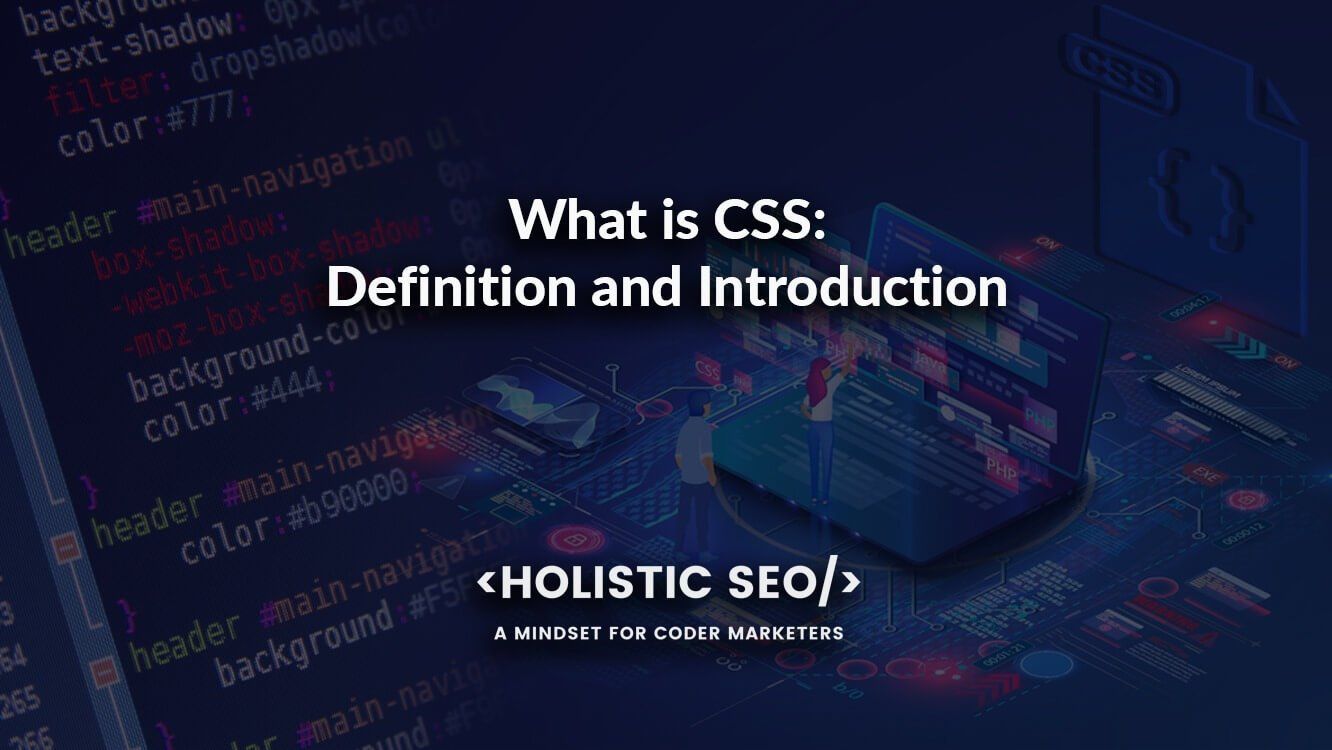When it comes to web design, the term “CSS” is often used. We’ll tell you what the abbreviation stands for and what CSS actually is. CSS stands for Cascading Style Sheets and is a way for HTML documents to decouple the content of a page from the design instructions of the individual elements, such as headings, quotations, etc. You can create a CSS file for a domain and integrate it as an external resource on all subpages. This can save a lot of time if there are fixed requirements for design elements that do not change between documents.
The cascading part becomes clear when you deal with different classes. For example, you can specify in the CSS file that all H2 headings (parent element) are displayed in font size 46 and then insert a subclass of the H2 headings (child element) that prints the text in bold if a certain class (e.g. “bold”) is defined. In the document, I do not have to repeat the instruction for the font size for the subclass, since this is inherited from the higher-level instruction (spilled over). With this instruction, each element is given the font size 42 and only headings are also printed in bold.
What is the Importance of CSS?
The ability to decouple the design from the content of a document brings noticeable speed advantages. The individual HTML documents become shorter because the design instructions are outsourced. In addition, the website operator does not have to ensure that every document has all the necessary design instructions. This can immensely reduce the administrative burden, especially with a large number of documents. I can also tell browsers how long the CSS file can be used (and how it can be cached). This means that the browser does not have to download the file every time, which benefits the loading time.
How can I pass CSS information to a document?
There are several ways to embed CSS in an HTML document. The two most common are the linking of an external CSS file and the direct embedding within an HTML document. You can open <style></style> tags into an HTML Document to use CSS as internally. Also, you can inject the CSS directly into the HTML Nodes such as <h1 style=”font-weight: bold;”>Example</h1> The latter is called as inline CSS while the first is called as internal CSS.
What are the External CSS File and How they Work?
It is usually easiest to summarize all style information in a CSS file and to reference it in the part of the HTML document:
<link href="https://www.holisticseo.digital/assets/css/style.css"
rel="Stylesheet" type="text/css" />This tells the browser that the file “main-stylesheet.css” must be loaded in order to display the content of the HTML document correctly.
What is Inline CSS and How it Works?
You can also choose to add part of my style sheet directly within the area of the HTML document. For this, you use a style tag within the HTML document.
<style>
.img-responsive {
display:block;
max-width:100%;
height:auto;
}
</style>Now the browser would know that all elements with a class = "img-responsive" should use the style instructions above. To learn more, we recommend you to read our “Javascript Basics” Guideline.
What is the Use of CSS for Search Engine Optimization?
The ability to define style information once and implement it on all sub-pages naturally also brings advantages for search engine optimization. With the appropriate instructions in a CSS file, you can specify exactly how a document is displayed from a desktop and/or a mobile browser. So you can create a responsive design once and all sub-pages can benefit from it so that two versions for desktop and mobile are not required.
In addition, CSS has been used over the years to increase the loading speed of many websites. This became necessary when many files were required to display the website correctly. A plethora of requests in the older HTTP standard, HTTP / 1.1, resulted in the loading time being extended for the sole reason that the browser was only allowed to create a maximum number of connections. With the new HTTP / 2 standard, this restriction no longer applies.
What is the importance of CSS and HTTP / 1.1?
With HTTP / 1.1, most browsers simply allow 6 simultaneous connections per host. In addition, the connections are terminated after the transfer of the resource. This can result in increased loading times simply due to the latency (which is particularly noticeable with mobile connections). You can also load graphic elements that are used on the website as a large image sprite and then only use CSS to display the parts of the image that contain the required graphics.
Note: Google doesn’t index the images via CSS such as “background-image: url(https://example.com/image.png);“. So, you should use them with “<img src="https://example.com/image.png"> tag.
What is the importance of CSS and HTTP / 2?
With the new HTTP standard 2.0, the limitation of the maximum connections is relaxed and the connections can also be used for more than one resource. As a result, the latency of the connection setup plays a much smaller role in the page speed.
What are the Facts about CSS?
The important facts about CSS can be found below.
- The abbreviation CSS stands for “Cascading Style Sheets”, which translates to “tiered design sheets”. In short: CSS is used to design websites.
- CSS is an integral part of web design and it makes sense to look at the possibilities that cascading style sheets offer as SEO.
- Especially when it comes to page speed optimization, the time for first contentful paint can still be shortened by using inline CSS.
- In order to create the design of a website, for example, font size, font color, and other features, it needs a uniform programming language. HTML and CSS are the most common languages used to design websites.
- CSS has prevailed mainly because of its simplicity. CSS is easy to use, clearer than other standards, comparatively easy to learn, and makes websites load faster. Also, CSS doesn’t have dependencies and doesn’t get always new updates, CSS is a stable programming language.
- CSS files can be united and refactored to make a web page faster.
- CSS properties, selectors, and values have different effects on different browsers and also they have different rendering costs.
- B2P Marketing: How it Works, Benefits, and Strategies - April 26, 2024
- SEO for Casino Websites: A SEO Case Study for the Bet and Gamble Industry - February 5, 2024
- Semantic HTML Elements and Tags - January 15, 2024


